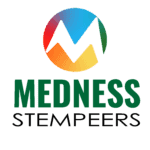FDA Certifies Vyloy as a Novel Approach Against Gastric Cancer: a CLDN18.2-Targeted Therapy
On October 18, 2024, FDA approved Vyloy (zolbetuximab-clzb) as the first and only claudin-18.2-targeted antibody to treat gastric cancer. The drug has been approved to be used in combination with fluoropyrimidine and platinum containing chemotherapy for patients suffering from locally advanced unresectable or metastatic human epidermal growth factor receptor 2 (HER2)-negative gastric or gastroesophageal junction […]
FDA Approves Zolbetuximab-clzb for Advanced Gastric and GEJ Adenocarcinoma
IntroductionThe U.S. Food and Drug Administration (FDA) has recently approved a breakthrough treatment, zolbetuximab-clzb (Vyloy, Astellas Pharma US, Inc.), for the first-line treatment of adults with locally advanced, unresectable, or metastatic gastric and gastroesophageal junction (GEJ) adenocarcinoma. Targeting a specific biomarker—claudin 18.2 (CLDN18.2)—this therapy, combined with chemotherapy, offers a promising new option for patients with […]
FDA Approval of Inavolisib Combination Therapy for PIK3CA-Mutated, HR-Positive, HER2-Negative Breast Cancer
IntroductionThe FDA has recently approved a new combination therapy, marking a significant advance in the treatment of endocrine-resistant, PIK3CA-mutated, hormone receptor (HR)-positive, human epidermal growth factor receptor 2 (HER2)-negative, advanced breast cancer. This combination involves inavolisib (Itovebi), palbociclib, and fulvestrant, offering new hope to patients with recurrent disease after adjuvant endocrine therapy. Current Regulatory StatusInavolisib, […]
Blood glucose as a predictor of cardiovascular events
A European observational study has determined that 2h post-load glucose (2-hPG) is a better marker than HbA1c in predicting cardiovascular events for coronary artery disease patients. This study was conducted in various European countries and was published in the Lancet Diabetes Endocrinology in Sept 2024. Coronary artery disease is a condition where fat, cholesterol and other materials […]
VYALEV approved by FDA for Advanced stage Parkinson’s Disease patients
AbbVie’s subcutaneous 24-hour continuous infusion drug, VYALEV is now approved by the U.S. Food and Drug Administration (FDA) to reduce motor fluctuations in advanced stage Parkinson’s Disease patients. This is the first and only subcutaneous continuous infusion therapy that involves wearing a portable kit throughout the day allowing personalized dosing based on patient’s need. Also […]
Q for Q Fever
Q fever is a rare infectious disease transmitted through the inhalation or ingestion of the bacteria Coxiella burnetii. Cattle, sheep, and goats frequently serve as bacterial hosts for this microorganism. C. burnetii is mostly transmitted through inhalation of contaminated air or ingestion of contaminated food and beverages. Agricultural laborers, particularly those engaged with livestock, individuals […]
P for Progeria: Part II
Progeria or Hutchinson-Gilford Progeria Syndrome (HGPS) is a rare genetic disorder characterized by accelerated aging. Caused by a mutation in the LMNA gene, it leads to the accumulation of the toxic protein Progerin, resulting in severe cardiovascular issues and a life expectancy averaging 14.5 years. Progerin disrupts nuclear structure and function, causing various cellular abnormalities. […]
P for Progeria- Part I
Progeria or Hutchinson-Gilford Progeria Syndrome (HGPS) is a rare and fatal genetic disorder characterized by premature aging that begins in childhood. The condition is typically not inherited but arises from a sporadic autosomal dominant mutation, with a low chance of occurrence (1 in 4 to 8 million), increasing to 2-3% if a family has already […]
Nivolumab Approved for Neoadjuvant and Adjuvant Therapy in Resectable NSCLC: A New Horizon for Lung Cancer Treatment
Introduction In a significant milestone for lung cancer treatment, the FDA has approved nivolumab, in combination with platinum-doublet chemotherapy, as a neoadjuvant therapy for resectable non-small cell lung cancer (NSCLC). Following surgery, nivolumab is administered as a single-agent adjuvant treatment. This approval is specifically for adults with tumors ≥4 cm and/or node-positive NSCLC without EGFR […]
First iPSC- Islet Transplantation in Humans- Proceed with Caution
For the first time, a group of scientists from China successfully performed islet transplantation using iPSCs (induced pluripotent stem cells) in one patient. They made iPSCs from the fat cells of the patients using chemicals instead of the conventional way of using Yamanaka factors. They successfully tested these human iPSCs-derived islets on monkeys before using […]
O for Osteosarcoma- Part II
The future of osteosarcoma therapy is centered on innovative clinical trial designs that prioritize progression-free survival and the identification of potentially effective agents, such as regorafenib and cabozantinib. These trials aim to explore targeted combinations in patients with tumors that have been genomically and immunologically characterized. Recent advances in genetic sequencing have uncovered significant complexity […]
Wegovy®: Expanding Benefits for Obesity-Related Heart Failure with Preserved Ejection Fraction
Introduction Obesity-related heart failure with preserved ejection fraction (HFpEF) presents a significant health challenge, particularly in those with obesity and type 2 diabetes. Wegovy® (semaglutide 2.4 mg), a once-weekly subcutaneous injection, is now at the forefront of an important advancement. Recently, the European Medicines Agency’s Committee for Medicinal Products for Human Use (CHMP) issued a […]
Recent FDA Approvals pack Double punches against Niemann-Pick disease type C
Rare diseases, affecting fewer than 200,000 people in the U.S., pose significant challenges due to their low prevalence. According to the NIH, there are over 7,000 known rare diseases, each with unique symptoms and treatments. For example, cystic fibrosis, a genetic disease affecting the lungs, often goes misdiagnosed. The lack of large patient populations hinders […]
Transparent mice are here – Not a science fiction, but a reality.
Scientists at Stanford University have made live mice transparent, easing biomedical research and saving their lives. They used an FDA-approved food coloring dye called tartrazine, which makes the mice’s skin transparent. They used this dye on the mouse brain, abdomen, and muscle for imaging. Below is the figure of the mouse’s abdomen before and after […]
Nanotechnology: Revolutionizing Diabetes Treatment and Diagnostics
The increasing global prevalence of diabetes demands innovative solutions beyond traditional treatments, which often struggle with high costs and limited efficacy. Nanotechnology, a rapidly evolving field, offers groundbreaking possibilities in managing diabetes, providing more targeted, effective, and cost-efficient interventions. Image Source: Vinoth Khandelwal Nanotechnology in Diabetes Management Nanomedicine involves the use of nanoparticles (NPs), whose […]
O for Osteosarcoma – Part I
Osteosarcoma is a rare malignancy. Annually, approximately 1,000 new osteosarcoma cases are identified in the United States. Approximately fifty percent of these cases involve children and adolescents. Most osteosarcomas manifest in children, adolescents, and young adults aged 10 to 30. Adolescents are the most frequently impacted demographic, although individuals of any age may acquire osteosarcoma. […]
Once-Weekly Insulins Show Promise in Simplifying Diabetes Management
Introduction Managing type 2 diabetes with insulin therapy presents challenges, particularly with daily injections. Recently, new clinical studies have emerged evaluating once-weekly insulin options that aim to reduce the burden of daily injections while maintaining effective blood sugar control. These innovative treatments, including once-weekly icodec (Awiqli, Novo Nordisk) and insulin efsitora alfa (efsitora, Eli Lilly), […]
N for Narcolepsy- Part II
Narcolepsy is a central condition that causes people to be too sleepy during the day. Narcolepsy management is symptomatic; currently, there are no disease-modifying treatments available. Many individuals with narcolepsy find that tiredness and cataplexy significantly affect daily living, therefore influencing relationships, school, employment, and social life. Most patients need pharmaceutical treatment, and many find […]
Precision in NSCLC Treatment: The Predictive Power of TROP2-QCS in Datopotamab Deruxtecan Therapy
Introduction The quest for more personalized and precise cancer treatments has gained momentum with the recent findings from the TROPION-Lung01 Phase III trial. This pivotal study explores the role of the TROP2-QCS biomarker in predicting clinical outcomes for patients with non-small cell lung cancer (NSCLC) undergoing treatment with datopotamab deruxtecan (Dato-DXd). The trial highlights a […]
N for Narcolepsy- Part I
Narcolepsy is a rare and chronic neurological disorder characterized by instability in sleep-wake regulation. marked by chronic excessive daytime drowsiness (EDS) and disrupted nighttime sleep. Individuals with narcolepsy experience sudden sleep attacks that may last from a few seconds to several minutes and can occur multiple times a day. The condition is thought to be […]
CAHn you do it?
Crinecerfont can improve CAH What is CAH and its cause? In response to stress, the body releases CRH (corticotropin-releasing hormone) from the hypothalamus, which signals the pituitary gland via CRF1 (corticotropin-releasing hormone receptor 1) to produce ACTH (adrenocorticotropic hormone). ACTH further stimulates the adrenal gland present over the kidney to synthesize cortisol, aldosterone, and androgens […]
M For Multiple Myeloma- Part II
There is currently no cure for multiple myeloma; however, there are numerous treatment options available to effectively manage the disease, with new ones arising from time to time. The primary objective of treatment for multiple myeloma is to Induction therapy is the standard of care for newly diagnosed multiple myeloma, and it is followed by […]
Your Face Can Predict Metabolic Disorders
A team of scientists from Beijing, China have developed a thermal face image analysis program called ThermoFace (TF) that could predict biological age and metabolic disorders with 80-90% accuracy. They trained their program on thermal and 2D visible images of 2,811 Han Chinese individuals – 1,339 females and 1,472 males. They made a face mesh, […]
M For Multiple Myeloma- Part I
Multiple Myeloma is a rare cancer that arises from plasma cells, a type of white blood cell produced in the bone marrow. These cells become malignant, proliferating uncontrollably and leading to tumor formation primarily in the bone marrow. When only a single tumor is present, the condition is called solitary plasmacytoma. When multiple tumors are […]
Redefining the Standard of Care: Lazertinib and Amivantamab for NSCLC
The FDA has approved lazertinib (Lazcluze) in combination with amivantamab-vmjw (Rybrevant) for the first-line treatment of non-small cell lung cancer with specific genetic mutations. In a significant advancement for the treatment of non-small cell lung cancer (NSCLC), the U.S. Food and Drug Administration (FDA) has granted approval to lazertinib (Lazcluze) when used in combination with […]
FDA Approves Lazertinib and Amivantamab-vmjw Combination for First-Line Treatment of EGFR-Mutant NSCLC
Introduction The U.S. Food and Drug Administration (FDA) has granted approval for the combination of lazertinib (Lazcluze) and amivantamab-vmjw (Rybrevant) as a first-line treatment for patients with locally advanced or metastatic non-small cell lung cancer (NSCLC) harboring specific epidermal growth factor receptor (EGFR) mutations. This approval marks a significant advancement in the treatment landscape for […]
L for Legg-Calve-Perthes Disease- Part II
Legg-Calvé-Perthes disease (LCPD) is a pediatric hip condition characterized by interruption of the blood supply to the femoral head, leading to osteonecrosis. This condition primarily affects children between 4 and 8 years but can occur between 2 and 15 years. Various treatments, including both surgical and nonsurgical options, have been explored to manage LCPD. Despite […]
FDA Approves Neoadjuvant/Adjuvant Durvalumab for Resectable NSCLC
Introduction The U.S. Food and Drug Administration (FDA) recently approved the use of durvalumab (Imfinzi, AstraZeneca) in combination with platinum-based chemotherapy as a neoadjuvant treatment for adults with resectable non-small cell lung cancer (NSCLC). This treatment regimen is followed by durvalumab monotherapy as adjuvant therapy post-surgery. This approval is specifically for patients with tumors measuring […]
Tasty Traps: FDA and FTC Warn Against Copycat Snack Containing Delta-8 THC
FDA and FTC crack down on illegal delta-8 THC copycat snacks, protecting consumers from unregulated edibles in deceptive packaging that risks accidental ingestion, especially by children Imagine opening a yellow and orange pack of Flamin’ hot Cheetos and munching on one of those crunchy sticks. Instead of the cheesy, salty taste of nostalgia, you start […]
FDA Grants Accelerated Approval to Afamitresgene Autoleucel for Unresectable or Metastatic Synovial Sarcoma
The U.S. Food and Drug Administration (FDA) has granted accelerated approval to afamitresgene autoleucel (TECELRA, Adaptimmune, LLC), a genetically modified autologous T cell immunotherapy. This approval targets adult patients with unresectable or metastatic synovial sarcoma, particularly those who have undergone prior chemotherapy and possess specific HLA-A alleles, with tumors expressing the melanoma-associated antigen A4 (MAGE-A4). […]

